PUBLISHED: August 2024 By Nick Stiltner, HPB Conservation Technician
Shoreline and bank erosion are among the most important aspects of conservation work in Houston. Many of the shorelines along our bayous are eroding, filled with invasive species, or in various states of disarray. This leads to an increased risk of flooding, degradation of habitat, and other environmental concerns. It is much less intensive to preserve the banks that are intact and work to prevent erosion than to repair the banks that pass a threshold of no return.
This was the case at Thomas Bell Foster Park along Greens Bayou, which is tidally influenced and prone to flooding with a constant ebb and flow that exacerbates any existing erosion.
HPB determined the shoreline edge closest to our kayak launch required additional strengthening. As such, we hired a contractor, HydroGeo Designs Inc., to begin work on restoring the shoreline, using a more nature-based solution to erosion control.
As part of their work, the contractor leveled the ground, added a native seed mix, and created reinforcement structures out of fallen trees and coconut mesh. This work was completed around the end of May 2024, and then the restoration reins were handed to me.
The plan was to plant as many native plants as possible, ASAP. The main challenges were planting in the Texas summer, the clay soils, and the amount of effort it would take to plant 500+ plants in these conditions.

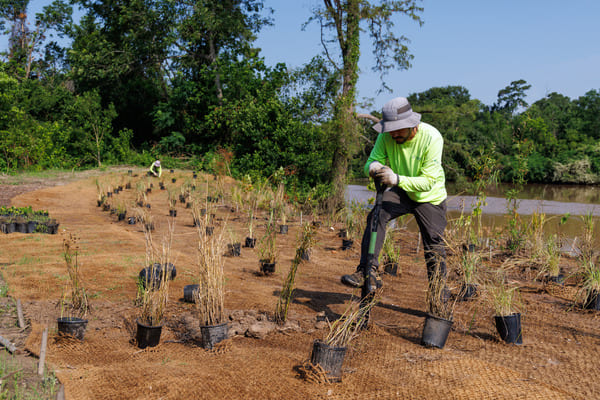
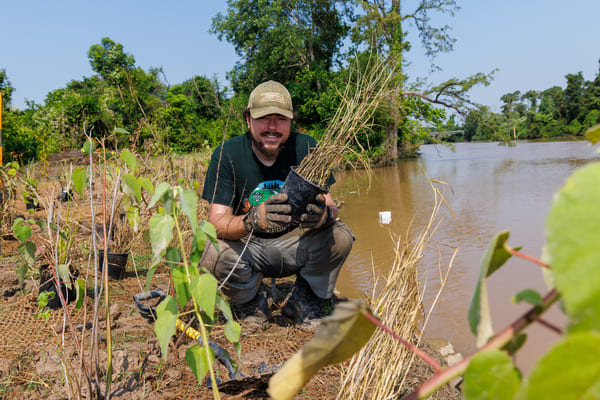
With the help of our Conservation Assistants crew, volunteers, staff members, and conservation maintenance contractor, we planted over 1000 native species throughout June. Most of the plants were supplied by our nursery and include a mix of native grasses, forbs, sedges/rushes, trees, and shrubs. Below, you can see some of the species and why they were selected.
This is a long-term project, and many more plantings will be taking place, but a solid foundation has been laid and will continue to be built upon for years to come.
Species used:
(All pictures taken from https://www.wildflower.org/ )
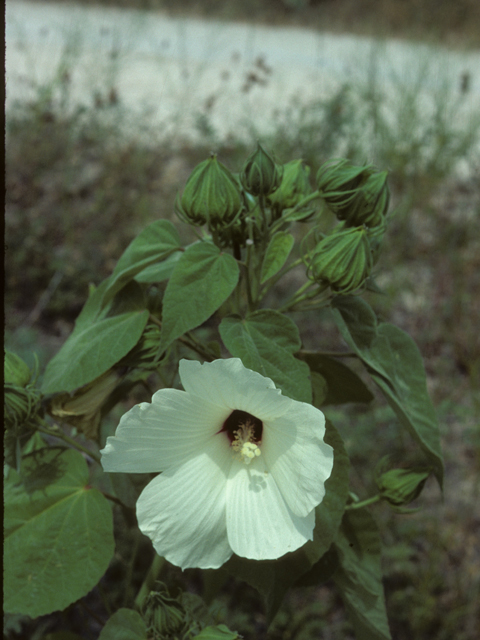
Woolly rose mallow
(Hibiscus lasiocarpos)
Planted along the shoreline. Water-loving and deep-rooted, already present on tidal wetland on site. Many are available in nursery.
American Sycamore
(Platanus occidentalis)
Planted 5-10 feet from shoreline. A Texas native tree species that can withstand the moist conditions of the shoreline. Great for birds and shade as it grows larger.
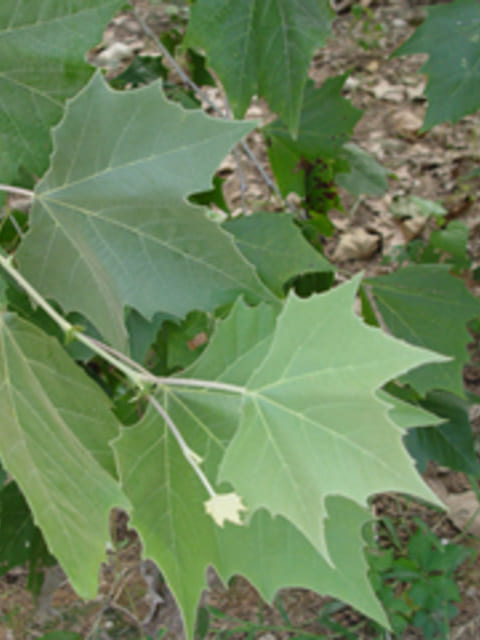
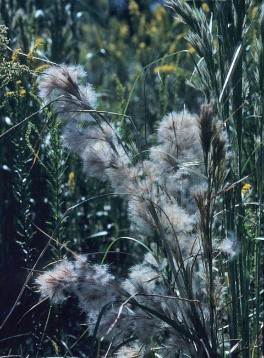
Bushy Bluestem
(Andropogon glomeratus)
Planted in open areas 10-15 feet from shoreline. Sun-loving, deep-rooted, and tolerant of the moist soils near the shoreline.
